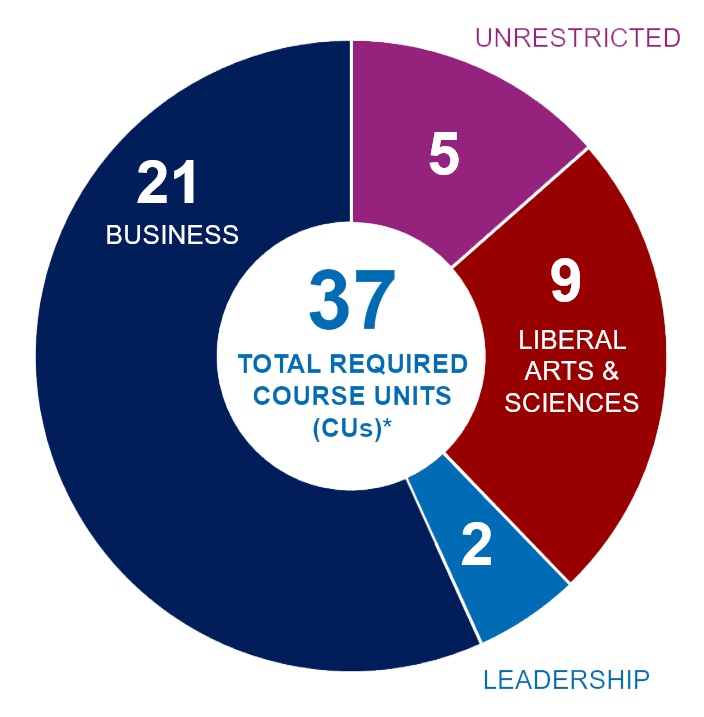At Wharton, you will learn how to apply business methods and economic theory to real-world problems
We give you the opportunity to study arts and sciences, engineering, nursing, communications, education, government administration, law, social policy, and more — all as an undergrad.
A Flexible Curriculum to Follow Your Interests
Wharton’s curriculum encourages students to shape their own educations. Our four-year Bachelor of Science in Economics program consists of 37 courses in business and the arts and sciences. In fact, 24% of the classes you need to graduate must be taken outside of Wharton in Penn’s other 11 schools. We encourage you to take full advantage of these options by studying abroad, pursuing a minor, or getting a dual degree in a completely different subject.
The chart shows the 4-Year Integrated Curriculum with Business and Liberal Arts and Sciences.
*Penn uses a course unit (CU) system. Most courses are 1 CU.

Sample Curriculum
You can craft your own experience around the fundamental classes.
YEAR |
FALL |
SPRING |
| First | Introduction to Economics for Business, math or statistics course, Wharton 1010 (gateway course to the Leadership Journey), and 2-3 other courses | Math or statistics course, 2 Business Fundamentals, and and 1-2 other courses |
| Second | Wharton 2010 (Business Communication), 2-3 Business Fundamentals, 1-2 other courses | 2-3 Business Fundamentals, 1-2 other courses |
| Third | During the third year of study, you will be taking Management 3010 (Teamwork and Interpersonal Dynamics), completing courses toward your concentration, considering a possible minor and/or studying abroad, and fulfilling any remaining requirements. | |
| Fourth | During the fourth year of study, you will be finalizing your concentration choices and minor (if applicable) and completing your Leadership Journey capstone requirement, and fulfilling any remaining requirements. | |
Teaching & Learning Methods
Wharton classes focus on hands-on problem solving, using teaching methods such as case studies, negotiations, group work, and simulations in addition to traditional lectures. Students learn by starting with a problem or concrete example. After fully understanding the problem, they look for solutions and then begin to examine theories to see how they might apply.
In a liberal arts setting, students often learn by starting with a theory or abstract idea. After fully understanding the theory, they then look for problems to understand how the theory applies.
When you are deciding on where to go to college, you should ask yourself whether you want to focus on the theory of economics (BA) or the application of economics and business knowledge (BS in Economics).
Student Profiles
Get the inside story from Wharton students.


